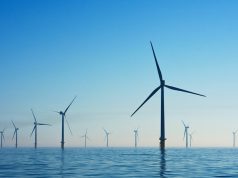|
Singapore, 02 Jan 2018 – Our EM Growth Tracker expanded to 6.1% (3m/3m sa ar) in November, 0.2pp higher than in October. The tracker has enjoyed a steady growth for the last 4 months, increasing more than 1% since its lowest level in July 2017. This expansion has allowed the tracker to be above its 12-month moving average (Chart 1). This month’s results are driven by soft data variables, which added 0.58pp to the model. More importantly business surveys have contributed 0.7pp to the tracker, while hard data has subtracted around 0.3pp (Chart 2). Despite the strong figures of the last few months, the weakness in hard data for November calls for caution. Our official EM forecast, compiled by aggregating the IIF’s individual EM country-level forecasts, is shown in the blue bars in Chart 1. We expect EM GDP growth will pick up to 4.3% q/q sa ar in 2017 Q4, a revision of -0.2% compared to our last forecast. Overall, the outlook for EMs is positive, with a significant reduction in policy uncertainty removing a potential headwind to growth, and the positive spillovers of developed economies enjoying a more solid growth path. Monetary policy is expected to tighten only gradually and fiscal policy is likely to be loosened in a number of countries. While most emerging market regions should see a pickup in growth in 2018, growth in emerging Europe and some countries in Latin America is expected to decelerate. The main challenges for EMs in 2018 will be related to the impact of monetary tightening, diminished access to foreign funding, questions on policy changes, uncertainty about reforms and ever-present political risk. |
||||
|
||||
Industrial production with mixed resultsEM ex. China IP growth expanded by 1.8% on a 3m/3m sa ar basis, below its September level of 4% (Chart 3). Apart from Russia, all other countries experienced positive IP growth, yet not as strong as in previous months. Singapore’s industrial production rose for a fifteenth straight month in October driven largely by growth in electronics output. Singapore and other trade-reliant economies in Asia have enjoyed a boost this year from an improvement in global demand (see our merchandise import section below), particularly for electronic products and components such as semiconductors. Taiwan’s IP output grew 2.9% in annual terms in October, a weaker reading than the 4.8% expansion recorded in September, which had marked a seven-month high. For Brazil IP grew 0.2% mainly due to increases in the production of semi and non-durable goods. China’s IP growth stayed at to 4.7% 3m/3m saar in November, driven by a slowdown in the mining sector, and growth in manufacturing output. Merchandise trade improvesData on nominal merchandise trade shows a resurgence in cross border trade. Overall, nine of the ten countries whose exports factor into our model expanded (Chart 4). Only Singapore saw their nominal exports contract (based on a 3m/3m saar measurement). Import growth rates, a proxy for domestic demand, were positive in 7 countries in our sample. China was the strongest performer, followed by Argentina and Indonesia. India was the only country to experience a contraction in nominal imports. Earlier concerns about China’s local demand are dissipating, with growth of 18.9% on a 3m/3m saar basis for October, and 27.6% in November. |
||||
|
||||
|
Business sentiment still strong
EM PMI indicators continued to be one of the areas of strength this month, with eleven out of twelve variables remaining in expansionary territory. South Africa was the only country that stayed below the breakeven level. The upward trend in business sentiment since the start of the year has persisted into the closing of 2017. Global growth has picked up alongside the PMIs, although it has increased by less than the PMIs would suggest. This, combined with policy uncertainties in some EMs constitute a potential risk for 2018.
Regional Trackers improve for EM Asia and Latam
Our Latam regional tracker has maintained a growing tendency since July, explained by a better outlook for Brazil. For the case of EM Asia, the strong numbers from Singapore, Taiwan and Indonesia have pushed this region’s tracker at around 8.2% (comparable to the all-time high levels at the beginning of the year). EM Europe and Africa’s tracker expanded, yet at a lower level than previous months, mainly due to weak figures coming from Russia and South Africa (Chart 5).
|
||||
.png) |





























.png)
.png)
.png)
.png)







